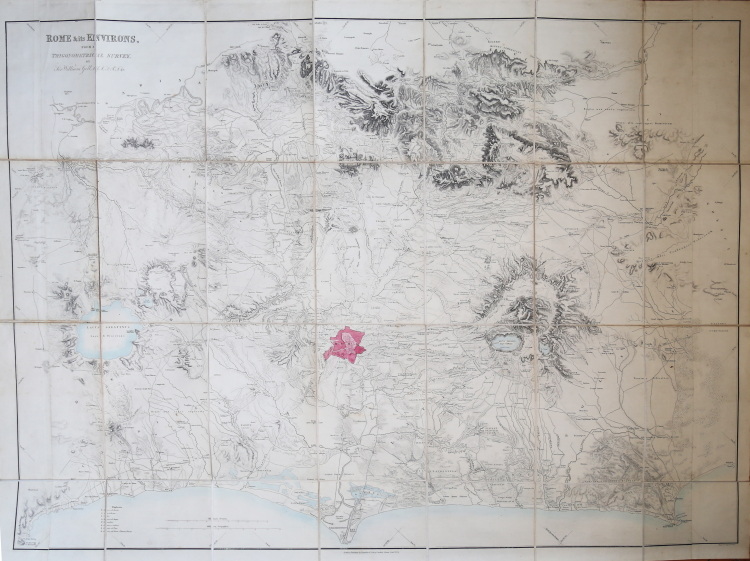




| Reference: | CO-664 |
| Author | Sir William GELL |
| Year: | 1834 |
| Zone: | Lazio |
| Printed: | London |
| Measures: | 1020 x 765 mm |



| Reference: | CO-664 |
| Author | Sir William GELL |
| Year: | 1834 |
| Zone: | Lazio |
| Printed: | London |
| Measures: | 1020 x 765 mm |
This large map details the topography of Rome and its environs, from Lacus Sabatinus [Lago di Bracciano] in the north to Norba in the south, and from Nerola in the east to the Tyrrhenian coastline in the west. Most of the larger features are identified by their Classical names. Includes an “Explicatio” in the lower left-hand corner of the design.
Published by Saunders & Otley, London, 1834.
Oriented with north to the left. Relief shown by hachures and shading; Rome is painted pink.
The map was completed in 1822. Although first engraved in Rome, it was re-engraved in London, with financial support from the Society of Dilettanti, and published with Gell's two-volume Topography of Rome and its Vicinity in 1834 and with the 2nd ed. in 1846.
Sir William Gell FRS (29 March 1777 – 4 February 1836) was a British classical archaeologist and illustrator. He published topographical illustrations of Troy and the surrounding area in 1804. He also published illustrations showing the results of archaeological digs at Pompeii. His best-known work is Pompeiana; the Topography, Edifices and Ornaments of Pompeii, published between 1817 and 1832.
|
Sir William Gell FRS (29 March 1777 – 4 February 1836) was a British classical archaeologist and illustrator. He published topographical illustrations of Troy and the surrounding area in 1804. He also published illustrations showing the results of archaeological digs at Pompeii. His best-known work is Pompeiana; the Topography, Edifices and Ornaments of Pompeii, published between 1817 and 1832.
|
|
Sir William Gell FRS (29 March 1777 – 4 February 1836) was a British classical archaeologist and illustrator. He published topographical illustrations of Troy and the surrounding area in 1804. He also published illustrations showing the results of archaeological digs at Pompeii. His best-known work is Pompeiana; the Topography, Edifices and Ornaments of Pompeii, published between 1817 and 1832.
|